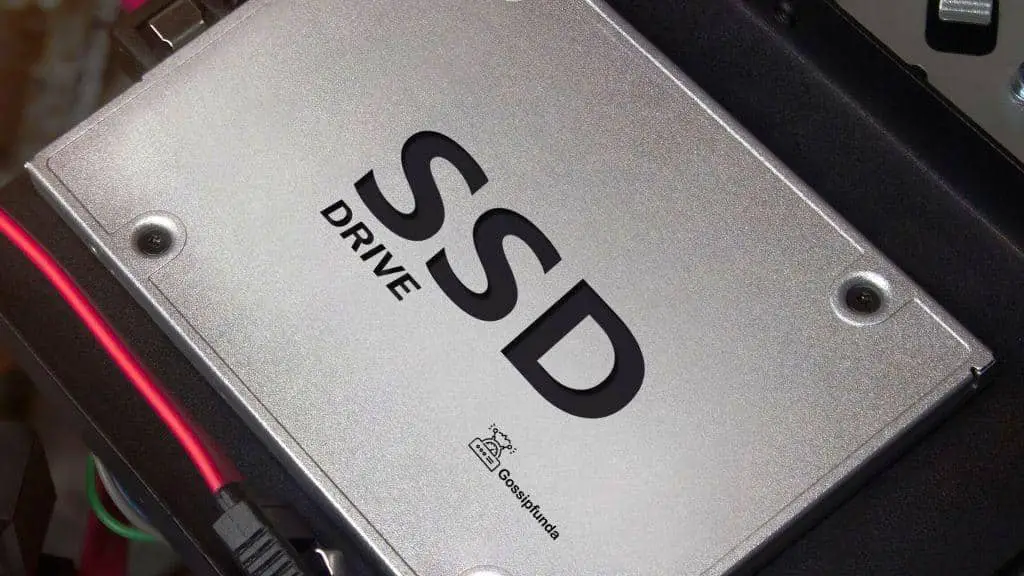Do you of the latest generation or the prior generation? Do you want 1TB SSD or 2TB SSD? Are you a coder or a computer hobbyist or an enthusiastic personality? Here’s a hard disk utilized by all, a storage media that is much more durable than the prior generation’s hard disks. No one has time for certain days. The world is in a rush. In today’s generation, slow and steady nevermore wins the race. Be faster and fasten your program loading on a machine using the new drives.
1TB SSD & 2TB SSD
You can’t use a thing without knowing about it. Let’s watch our video:
What is SSD?
Like HDD, SDD can also store a large volume of data but is more advantageous than HDD, demanding less power. It reads and writes data, which maintains even without power. Data do not decay in the SSD. Having no magnetic platters, SDDs use flash memory to store and carry their data. SSD uses a group of IC’s as a memory for its storage. SSD is also identified as a solid-state disk, although SSDs do not have physical interfaces.
Is it worth looking at SSDs without recognizing the interfaces employed? So Here they are classified on the basis of interfaces adopted by them.
Classification of 1TB and 2TB SSDs
SSDs use a number of linkers to connect with a machine. mSATA, M.2, SATA, U.2 are few of them. SSDs which already come fused with the board does not require any linkers for the association.

Serial ATA is the most frequently used interface which connects SSD to the desktop computers and PCs.
What is Serial ATA?
Generally called SATA is a kind of linker used for connecting solid-state drives to the computer. First-ever SATA transfers data at a rate of 1.5 Gb per second. Present-day SATA’s being more superior instructions at a rate equal to 6 Gb per second.
Other than SATA, there is one more interface that is most widely used named Serial attached SCSI. Usually called (SAS)has double the transfer rate than that of SATA. It can accommodate both read and write operations concurrently and promotes much better data unification than SATA.
Ever thought what makes up an SSD?
Various components make up an SSD and give them their behavior, which they reflect.
SSD which saves resolute data on solid-state flash memory has a couple of key elements-
- A Flash Controller
- NAND flash memory chips
The structural design of the SSD controller is optimized to perform great read and write execution for both sequential and random data calls.
Don’t Miss: DELL Inspiron 17
Flash Controller
- -Indilinx
- -IDX110M00-FC
- -Intel
- -PC29AS21AA0
- -JMicron JMF612
- -Samsung
- -S3C29RBB01YK40
- -Toshiba
- -T6UG1XBG
- -SandForce SF1500
NAND flash memory chips
Individual Flash die or devices using NAND and NOR technology.
- -Toshiba
- -IMFT (Intel Micron JV)
- -Samsung
- -Hynix
Before using any SSD, you need to install it. So how to insert these SSDs?
Installing these SSD is in your host is very manageable. Fasten your PC, lessen the time it demands to reset and load programs by following these simple steps of installation.
- Make assured you are working in a static-free environment.
- Deduce supplies and shut down the system.
- Hold the power button pressed to release leftover power.
- For protection, ground your body by any means before touching it.
- Fit SSD into the bay.
Fitting of SSD
Most solid-state drives are designed to fit in a to have in a 2.5in laptop drive bay, which you won’t find in a PC. They also have climbing sections to provide a better fit.
Sliding the hard disks into a spare drive bay till the alignment of the holes of the screw holes and the holes in the drive bay on the same line will also serve the same purpose.
- Connect the SATA power on the hard disk and switch on the supply.
- Plugin the correct linker from your supply into the solid-state drive.
- Care should be taken, as excessive pressure can damage the clip, which surrounds the power supply.
- Insert the SATA cable carrying data into the mainboard.
- Plug one of the SATA cables into the back of the solid-state drive.
- It will click after it is connected perfectly.
- Take proper care as an excess of downward pressure can harm the linker.
Connection of the cable into motherboard :
Now find an extra SATA port on your board, which is generally numbered. The less is the number, the better the performance.In the case of multiple hard disks, use the lowest numbered port to connect the drive, which you are going to reset.
- Reassemble your desktop.
- Then switch the supply on.
Features of 1TB SSD and 2TB SSDs
There are a number of features of 1TB and 2tb SSDs, which make them more reliable and abundant in the market. The beauty of any product is nothing but its features. Given below are some of the features of 1TB SSD and 2tb SSDs :
- Movable parts are absent in SSD. Your laptop will be much quieter with an SSD than it will be with motor-driven mechanical drive spinning at thousands of RPM.
- It retains its stored data. Data, once stored in SSDs, do not decay.
- Less weight of SSD makes them fit better in desktop computers.
Before using any drive and proceeding further, let’s know the pros and cons of 1TB and 2TB SSDs.
See also: MSI X570 Tomahawk Motherboard
BEST SSDs
Whether you require something in relevant – like the best SSD for a gamer, the best SSD for it worker, best estimates SSD, or the best compact SSD – or you’re after a more all-rounded most reliable SSD, and you would obtain the drive you require for.
1TB SSDs :
1. SAMSUNG 860 EVO 1TB
Samsung boosts its range of high-performance SSDs
Reasons to buy:
- Auto garbage collection Algorithm
- A choice of size options
- Beefy performance
Samsung has upped its game in the SSD stakes with some new editions. This addition of Samsung is very efficient. It provides back to back writespeeds which may range from 520 Mb/s to 550 MB/s. This makes it suitable for large files such as large videos. Despite using the older SATA technology, it is considered as one of the best SSD drives.
2. WD BLUE 3D NAND 1TB
It is the best SSD at a minimal cost.
It provides a back to back speed ranging up to 560MB/s and a consecutive write speed upto 530 MB/s.
1TB is preferable as it provides an excellent equilibrium between cost and output. It is cheaper, having older technology, and is best suited to be used in 2020.
3. SANDISK ULTRA 3D 1TB
Fast, reliable, and shock resistance Reasons to buy:
- Rapid-fire read/write speeds
- Shock and vibration resistance
SanDisk really boosts its SSD offering with the ultra 3D SSD, which should be of particular interest to gamers who will appreciate the blazing speed and graphics that are on offer here – though it’s a great all-rounder too and can turn its hand to any kind of computing use.
2tb SSDs :
1. Crucial MX500 2TB
This SSD is reliable and faster. It provides perfect storage along with limited size.
Reasons to buy:
- Huge amount of storage
- 256-bit hardware-based encryption
Crucial MX 500 provides consecutive read or write speeds ranging from 510 Mb/s to560 Mb/s.
It receives an additional improvement from Micron 3D NAND technology. It uses simple SATA technology and has a longer lifespan. Prices are declining in this model too.
2. SABRENT 2TB ROCKET
Reasons to buy:
- Flask disk technology
- Supports Smart and Trim commands
Power usage is very less compared to HDD. Therefore it is the best-suited SSD for the new generation of computers. It supports various interfaces.
3. SEAGATE BARRACUDA 2TB
Reasons to buy:
- Fast enough for gaming and editing
- Capacities are large enough for multiple backups
Seagate has dominated the data storage industry for 40 years. 256 MB cache reduces lag and load times. A high-speed spin of about 7200 RPM provides a peevish performance. Barracuda provides a maximum rate of data transfer ranging up to 6 GB/s.
One question that everyone once has thought of or the question that once has crossed their minds is, which is better 1TB SSD or 2tb SSD?
The answer you are searching for is finally answered. TB drive will be faster than 2tb but will, of course, have less space. So, if the options are for 1TB drive or 2TB drive, then I’d go for the 1TB.
Getting the maximum profit at a minimal cost is what we all believe. On that note, high-density SSDs in the 2TB range tend to have much lower IOPS. If you are using the 2TB SSD as your boot drive as well as a storage device, you are limiting the benefit of paying more for an SSD.
PROS AND CONS
Like every coin has two sides, every problem has two solutions, either yes or no; likewise, every drive has its own pros and cons, which makes it more usable and distinct from others. So have a look at the pros and cons of 1TB SSD and 2TB SSDs.
Pros of 1TB SSD and 2TB SSDs
- Reset time is less than 13 seconds.
- Absence of vibration due to the presence of static parts.
- Power drawn is less, so the heat produced is nearly negligible.
- SSD is safe from every impact of magnetism.
- Full disk encryption.
- SSDs are much faster and reliable than HDD.
Cons of 1TB and 2TB SSDs
- expensive.
- Limited storage capacity.
- Not abundant in the market.
- Has a shorter lifespan.
- SSDs have a limited number of write cycles, so constant writing and removing data will definitely wear them out.
Future of 1TB and 2tb SSD
- Affordable and so can meet once requirement.
- It provides the perfect required capacity for storage at a minimal cost.
- Do not require any power.
- Supports the impressive flash memory for its storage.
Satisfying the above needs, it is best suited for the future generation. That’s why its the most desirable SSD.
Conclusion
This is all you need to know about an SSD. Make a better choice with better knowledge. I hope all your questions are answered here. I hope you liked this blog, and all your curiosities are solved. Thank you.

An enthusiastic researcher in the field of science and technology. Having a creative mind, I love to write. Curiosity always takes me to a different level. I believe in quality, not quantity. This makes me have a more profound knowledge of whatever I do rather than having little knowledge of everything. Asking questions is my favorite hobby and getting the solution for it too. Other than this, I want to be a part of NGOs. I love children being educated and be the future of the coming generation.



